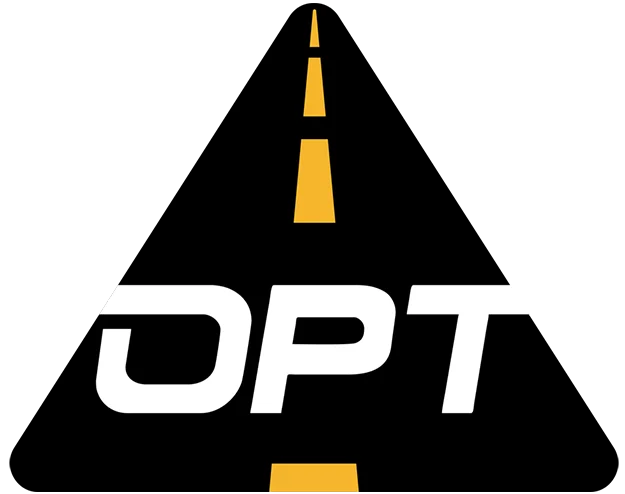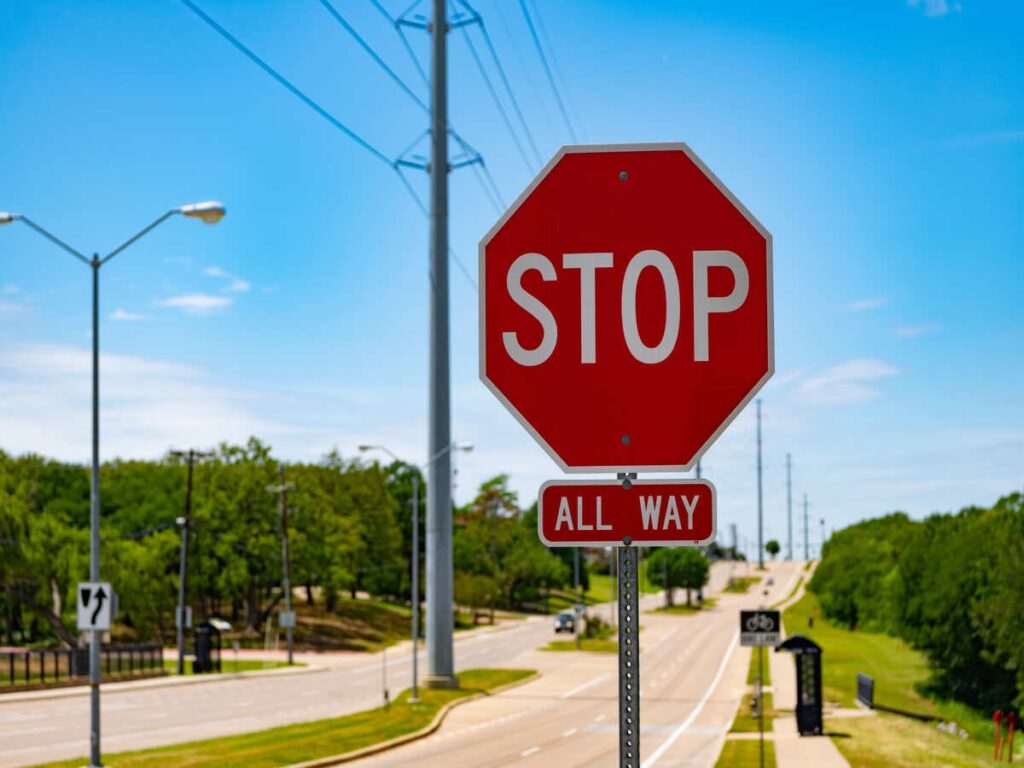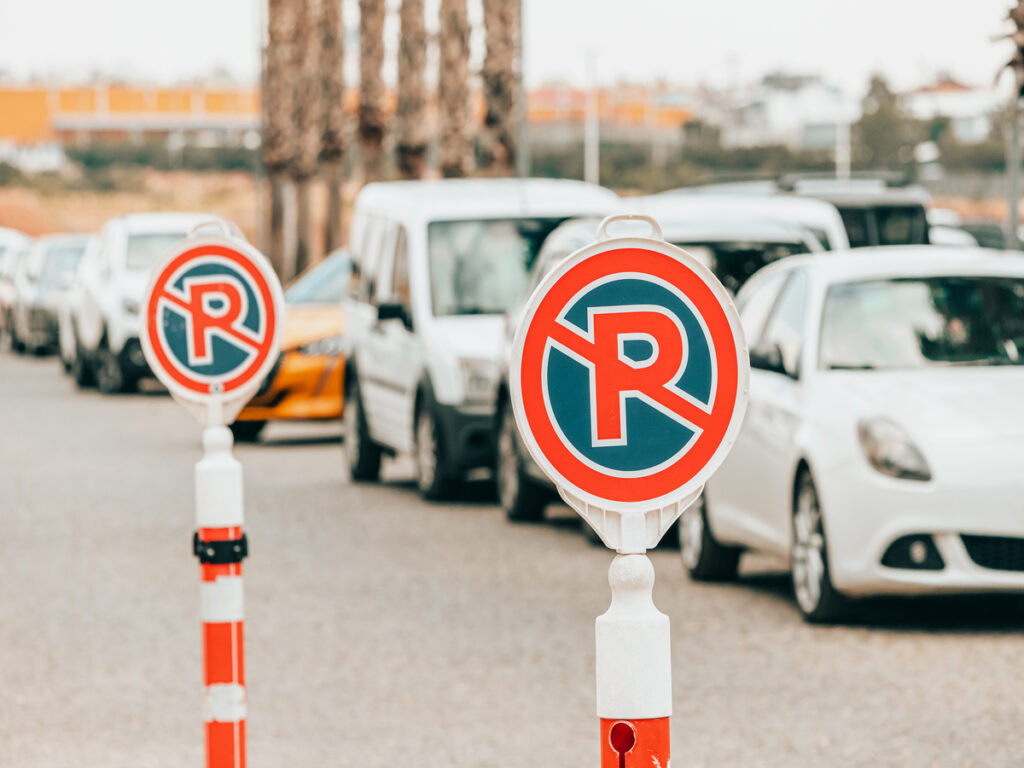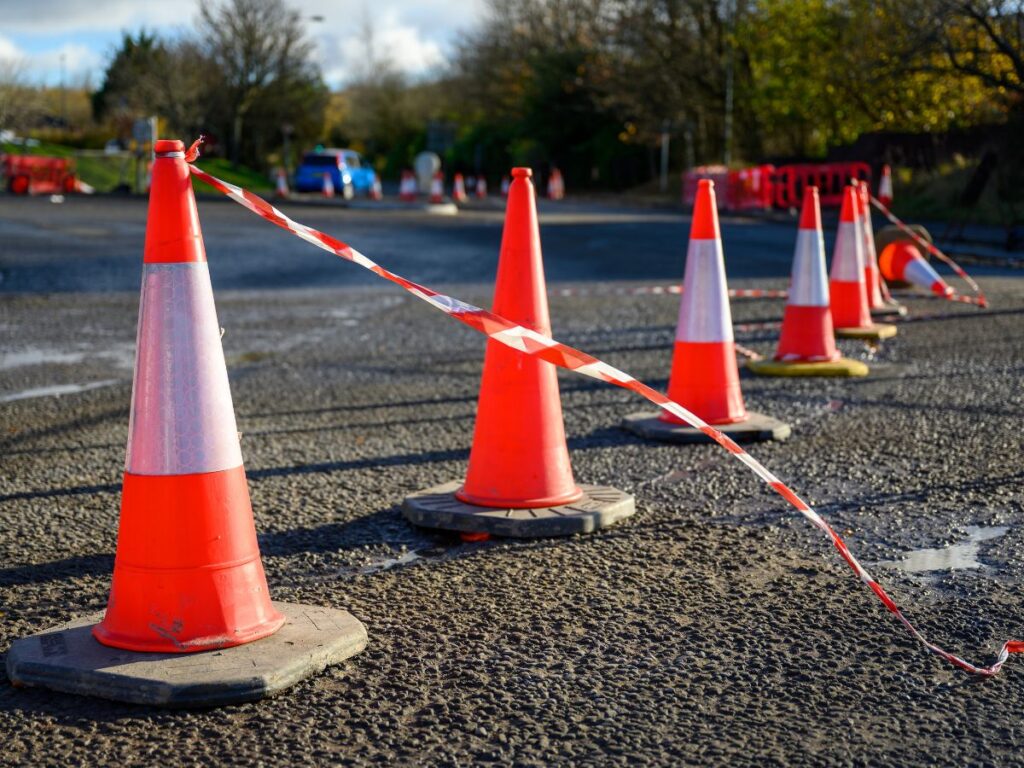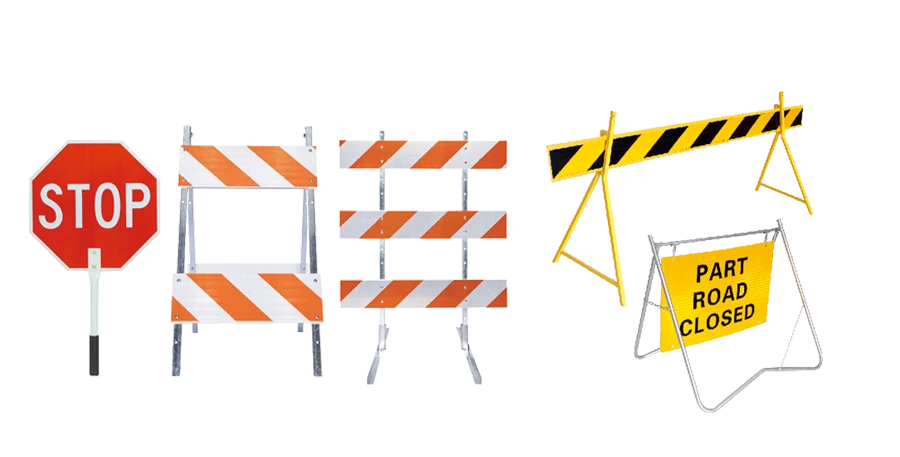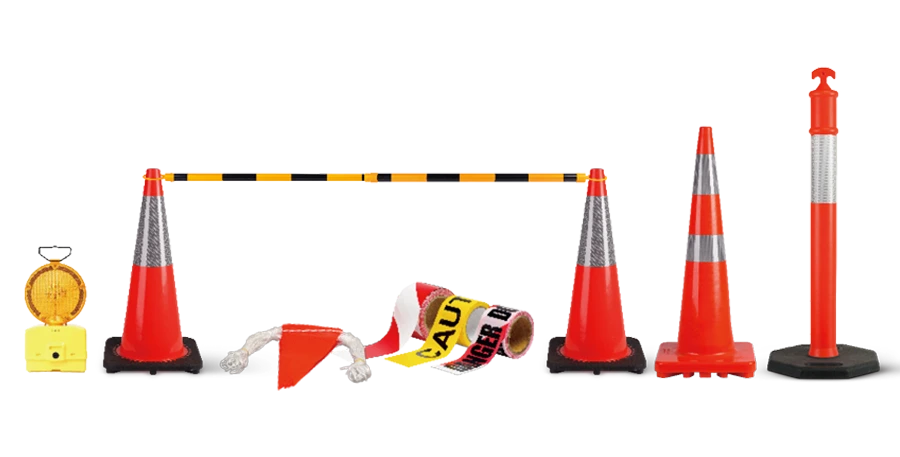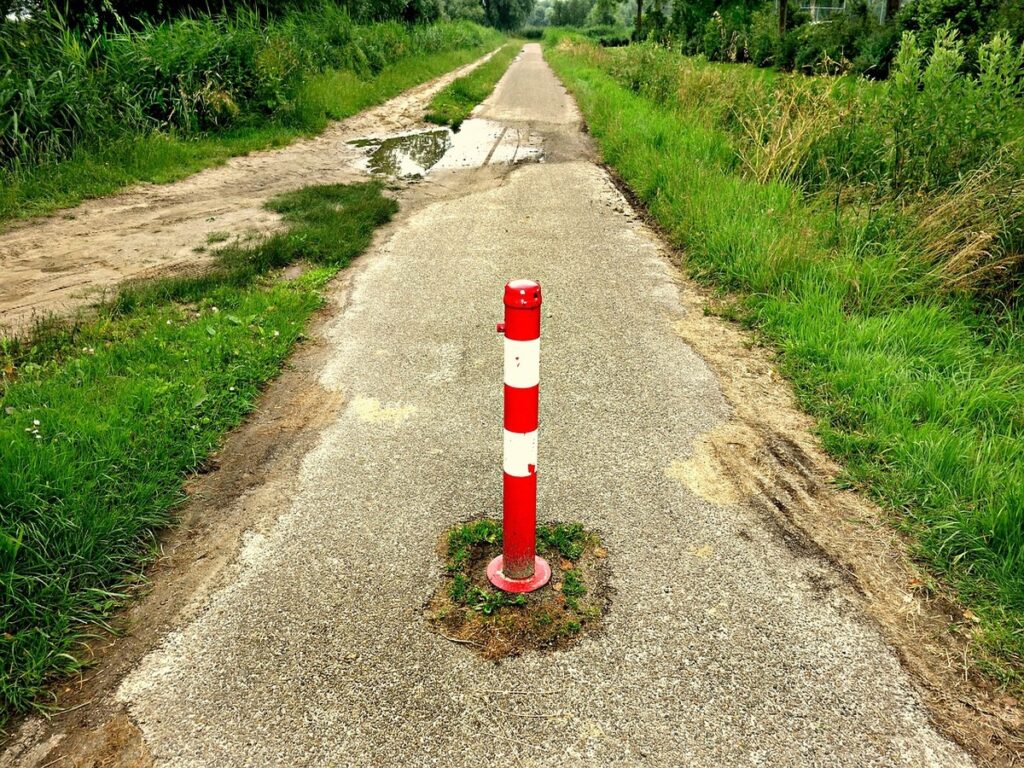
Verkehrszahlen spielen eine entscheidende Rolle bei der Sicherheit und Organisation von Straßen. Diese Geräte, aus verschiedenen Materialien hergestellt, Führungsfahrer durch Markieren von Fahrspuren, Straßenkanten, oder mögliche Gefahren. Flexible Designs, wie diejenigen, die sich beim Aufprall biegen, Reduzieren Sie die Schäden an Fahrzeugen und den Größen selbst. Sie sehen oft, dass sie die Sichtbarkeit bei schlechten Lichtverhältnissen oder bei unerwünschtem Wetter verbessern.
In Nordamerika, Diese Tools haben viele Namen, wie Verkehrspfosten oder Poller. Zu dieser Vielfalt tragen regionale Vorlieben und Designunterschiede bei. Wenn Sie diese Begriffe verstehen, können Sie die richtige Option für Sicherheit und Compliance auswählen.
Gebräuchliche Namen für Verkehrsleitschilder
Verkehrsleitschilder sind in ganz Nordamerika unter verschiedenen Namen bekannt. Diese Namen spiegeln oft ihr Design wider, Zweck, oder regionale Vorlieben. Wenn Sie diese Begriffe verstehen, können Sie die richtigen Leitpfostentypen für bestimmte Anwendungen identifizieren.
Verkehrsbeiträge
Verkehrsleitpfosten gehören zu den häufigsten Arten von Leitpfosten. Sie werden häufig dazu verwendet, Fahrzeuge durch Baustellen zu leiten oder Fahrspuren darin zu trennen Hochverkehrsgebiete. Diese Pfosten sind typischerweise groß und schlank, sie leicht aus der Ferne zu erkennen machen. Ihre leuchtenden Farben, wie Orange oder Gelb, Verbesserung der Sichtbarkeit während des Tages. Reflektierende Streifen an Verkehrspfosten verbessern deren Wirksamkeit bei Nacht oder schlechten Lichtverhältnissen.
Möglicherweise stellen Sie fest, dass Verkehrsbeiträge flexibel gestaltet sind. Diese Funktion ermöglicht es ihnen, sich beim Aufprall zu verbiegen, Reduzierung von Schäden an Fahrzeugen und den Pfosten selbst. Ihre Langlebigkeit macht sie zu einer beliebten Wahl für Bereiche mit starkem Verkehr oder häufigem Spurwechsel.
Kanalisatoren
Der Begriff „Channelizer“ bezieht sich auf eine bestimmte Art von Verkehrsleitvorrichtung, die den Verkehrsfluss lenken soll. Diese Leitpfosten werden häufig in Baustellen eingesetzt, Parkplätze, oder Bereiche, in denen vorübergehende Spuranpassungen erforderlich sind. Kanalisierer gibt es in verschiedenen Formen und Größen, aber ihr Hauptzweck bleibt derselbe: Fahrzeuge sicher und effizient zu führen.
Sie können Kanalisierer an ihren stabilen Sockeln erkennen, wodurch sie auch bei Wind stabil bleiben. Einige Kanalisierer verfügen über Griffe oder Schlaufen für einfachen Transport und Aufbau. Ihre Vielseitigkeit macht sie zu einer bevorzugten Option für viele Verkehrsmanagementszenarien.
Röhrenmarkierungen
Röhrenmarker sind eine weitere weit verbreitete Art von Leitpfosten. Diese Markierungen ähneln Verkehrspfosten, sind jedoch typischerweise schlanker und leichter. In Bereichen mit begrenztem Platzangebot findet man häufig röhrenförmige Markierer, wie schmale Gassen oder Radwege. Durch ihr kompaktes Design passen sie in enge Räume, ohne den Verkehr zu behindern.
Wie andere Arten von Abgrenzern, Röhrenmarkierungen sind gut sichtbar. Helle Farben und reflektierende Elemente sorgen dafür, dass sie bei verschiedenen Lichtverhältnissen hervorstechen. Dank ihrer leichten Bauweise lassen sie sich bei Bedarf einfach installieren und versetzen.
In Nordamerika, Möglicherweise hören Sie röhrenförmige Markierungen, die als Pylone bezeichnet werden, vor allem in Kanada. Dieser regionale Begriff unterstreicht die Vielfalt der Namenskonventionen für Verkehrsleitschilder.
Regionale und branchenspezifische Begriffe
Verkehrsleitschilder tragen je nach Region oder Branche oft unterschiedliche Namen. Diese Variationen können manchmal zu Verwirrung führen, Aber wenn Sie sie verstehen, können Sie effektiver kommunizieren und die richtige Ausrüstung für Ihre Bedürfnisse auswählen.
Regionale Namensunterschiede
In Nordamerika, Regionale Präferenzen spielen eine wichtige Rolle bei der Benennung von Verkehrsleitlinien. Zum Beispiel:
- Pylone: In Kanada, Vielleicht hören Sie, dass Menschen röhrenförmige Markierungen als Pylone bezeichnen. Dieser Begriff ist in den Vereinigten Staaten weniger verbreitet, wird aber im kanadischen Verkehrsmanagement weithin anerkannt.
- Poller: In einigen Teilen der USA, vor allem in städtischen Gebieten, Mit Pollern wird Robustheit beschrieben, feste Beiträge. Diese Pfosten dienen oft sowohl als Verkehrsleitplanken als auch als Schutzbarrieren.
- Sicherheitsposten: Im Süden der USA, Möglicherweise stoßen Sie auf den Begriff Sicherheitspfosten. Dieser Name unterstreicht die Rolle dieser Geräte bei der Unfallverhütung und der Lenkung von Fahrzeugen.
Tipp: Wenn Sie in einer neuen Region arbeiten, Machen Sie sich mit der lokalen Terminologie vertraut, um Missverständnisse zu vermeiden.
Branchenspezifische Begriffe
Verschiedene Branchen verwenden auch unterschiedliche Begriffe für Verkehrsleitschilder. Konstruktion, Transport, In der Event- und Veranstaltungsbranche gelten häufig eigene Namenskonventionen. Hier sind einige Beispiele:
- Flexible Pollerpfosten: In Bauzonen, Möglicherweise hören Sie diesen Begriff für Leitpfosten, die sich beim Aufprall verbiegen. Diese Pfosten sind ideal für Bereiche mit schwerem Gerät oder häufigem Fahrzeugverkehr.
- Leitkegel: Veranstaltungsplaner verwenden diesen Begriff häufig für kegelförmige Markierungen, die Fußgänger oder Fahrzeuge bei temporären Veranstaltungen leiten.
- Geräte kanalisieren: Transportunternehmen verwenden diesen Begriff häufig in offiziellen Richtlinien und Handbüchern. Damit ist jedes Gerät gemeint, das den Verkehrsfluss steuert, inklusive Beiträge, Kegel, und Barrieren.
Das Verständnis dieser Begriffe stellt sicher, dass Sie sich an unterschiedliche Kontexte anpassen können. Ob Sie eine Baustelle leiten oder eine Veranstaltung planen, Wenn Sie die richtige Terminologie kennen, können Sie klar kommunizieren und fundierte Entscheidungen treffen.
Notiz: Überprüfen Sie bei der Auswahl von Verkehrsleitschildern immer die örtlichen Vorschriften oder Industriestandards, um deren Einhaltung sicherzustellen.
Unterscheidungen zwischen Verkehrsleitlinien
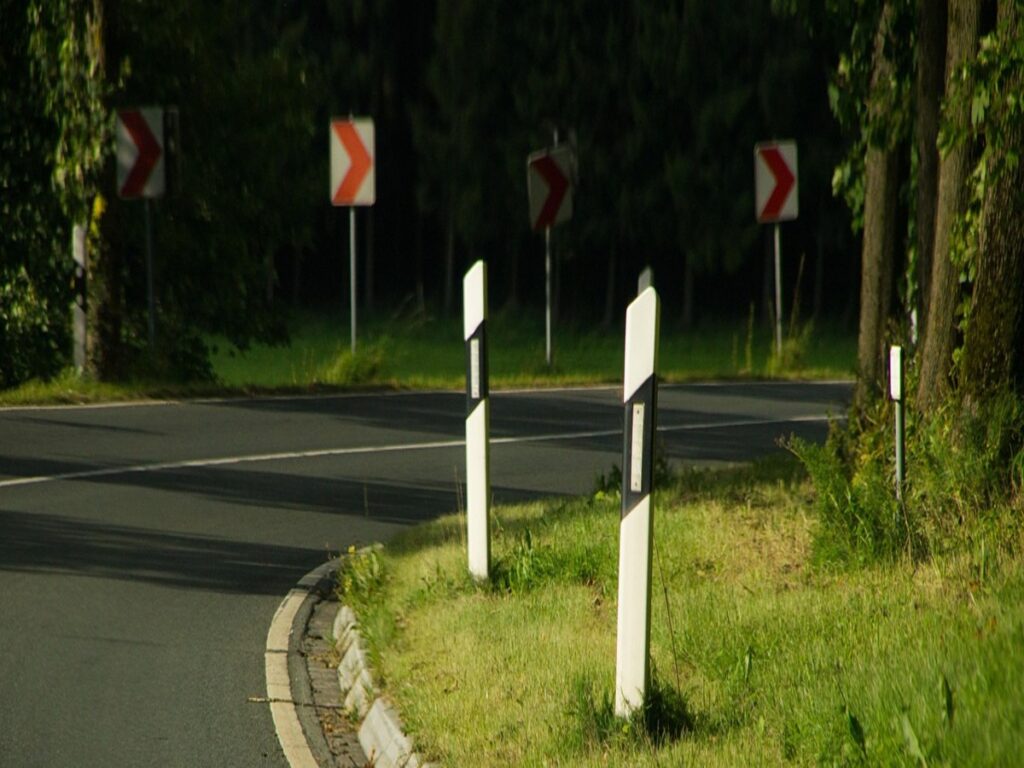
Channelizer vs. Verkehrsbeiträge
Kanalisierer sollen visuelle Barrieren schaffen, die den Fahrzeugverkehr durch Baustellen leiten oder kanalisieren, Umwege, oder andere vorübergehende Verkehrskontrollbereiche. Ihre stabilen Sockel halten sie fest an Ort und Stelle, auch unter schwierigen Bedingungen. Im Gegensatz, Leitpfosten markieren in erster Linie die Fahrbahnausrichtung und sorgen für eine kontinuierliche Orientierung in Bereichen mit Kurven oder Fahrbahnübergängen. Diese Pfosten werden oft als zusätzliche Hilfsmittel zur Verbesserung der Sichtbarkeit verwendet.
| Besonderheit | Kanalisatoren | Verkehrsbeiträge (Abgrenzer) |
|---|---|---|
| Beabsichtigte Verwendung | Schaffen Sie visuelle Barrieren für den Verkehr | Fahrbahnausrichtung markieren |
| Strukturell | Implantiert oder am Straßenbelag befestigt | Wird hauptsächlich zur Orientierung verwendet |
| Verschiebung | Nicht anfällig für Verschiebungen | Als Zusatzgeräte einsetzbar |
Beide Optionen verbessern die Auffälligkeit in optisch komplexen Umgebungen, aber ihre Anwendungen unterscheiden sich. Kanalisierer eignen sich hervorragend für temporäre Installationen, während Leitpfosten besser für dauerhafte Installationen geeignet sind.
Röhrenmarker vs. Flexible Graben
Röhrenmarker und flexible Leitpfosten weisen Ähnlichkeiten auf, unterscheiden sich jedoch in Design und Anwendung. Schlauchmarker sind leicht und kompakt, Damit eignen sie sich ideal für schmale Gassen oder Radwege. Ihre Portabilität ermöglicht eine schnelle Installation und einen schnellen Standortwechsel. Flexible Graben, auf der anderen Seite, sind so konstruiert, dass sie Fahrzeugstößen standhalten. They use durable materials like retroreflective material to enhance visibility and safety, insbesondere bei schlechten Lichtverhältnissen.
Tubular markers are often used in temporary traffic control scenarios, while flexible delineators are better suited for high-traffic areas where durability is critical. Beide Optionen verbessern die Auffälligkeit in optisch komplexen Umgebungen, but flexible delineators offer greater resilience.
Standards and Guidelines for Terminology
Traffic delineators must meet specific standards to ensure safety and effectiveness. These guidelines cover visibility, Materialien, und Platzierung:
| Specification Type | Details |
|---|---|
| Sichtweite | Must be visible at a distance in normal atmospheric conditions. |
| Material | Typically made of flexible recycled plastic to withstand vehicle impact. |
| Retroreflektierende Bleche | Stripes should be at least 3 inches apart when using retroreflective sheeting. |
| Color Matching | The color of the delineator should match the color of the road markings. |
| Platzierungsrichtlinien | Für die Verwendung auf der rechten oder linken Seite und die Rampenmarkierung gelten spezifische Richtlinien. |
| Abstand | Der Abstand variiert von 20 Füße zu über 500 Füße je nach Nutzung; näher an Rampen und Kurven. |
| Entfernung vom Straßenrand | Normalerweise zwischen 2 Zu 8 Meter vom Straßenrand entfernt. |
Durch die Einhaltung dieser Standards wird sichergestellt, dass Leitpfosten und andere Geräte effektiv funktionieren. Die richtige Platzierung und die Verwendung von retroreflektierendem Material erhöhen die Auffälligkeit in visuell komplexen Umgebungen, Reduzierung des Unfallrisikos. Befolgen Sie immer die örtlichen und bundesstaatlichen Richtlinien, um die Einhaltung sicherzustellen.
Regionale Unterschiede in der Namensgebung
Verkehrsleitschilder haben oft unterschiedliche Namen, je nachdem, wo Sie sich in Nordamerika befinden. Diese Variationen können es manchmal schwierig machen, zu verstehen, worauf sich jemand bezieht. Das Kennenlernen dieser regionalen Unterschiede hilft Ihnen, effektiv zu kommunizieren und die richtige Ausrüstung für Ihre Bedürfnisse auszuwählen.
In Kanada, Vielleicht hören Sie den Begriff “Pylone” häufig verwendet. Dieser Name bezieht sich oft auf röhrenförmige Marker, insbesondere solche, die in städtischen Gebieten oder temporären Verkehrseinrichtungen eingesetzt werden. Kanadier verwenden diesen Begriff auch für kegelförmige Markierungen, die häufig auf Parkplätzen oder bei der Straßeninstandhaltung auftreten.
In den Vereinigten Staaten, Die Namenskonventionen variieren je nach Region. Im Nordosten, Menschen bezeichnen Abgrenzer oft als “Beiträge” oder “Sicherheitspfosten.” Diese Begriffe betonen ihre Rolle bei der Führung von Fahrzeugen und der Verhinderung von Unfällen. In städtischen Gebieten, “Poller” ist ein beliebter Begriff. Poller sind in der Regel stabiler und werden sowohl als Verkehrsleitelemente als auch als Schutzbarrieren verwendet. In den Südstaaten, Sie könnten auf den Begriff stoßen “flexible Pollerpfosten.” Dieser Name unterstreicht die Flexibilität dieser Geräte, die sich beim Aufprall verbiegen, um Schäden zu reduzieren.
In einigen Regionen werden auch branchenspezifische Begriffe verwendet. Zum Beispiel, in Bauzonen, Vielleicht hörst du es “Abgrenzungen für Bauzonen” werden Geräte bezeichnet, die Fahrzeuge sicher durch Arbeitsbereiche führen. Diese Leitpfosten sind so konzipiert, dass sie starker Beanspruchung standhalten und in stark frequentierten Umgebungen eine klare Orientierung bieten.
Das Verständnis dieser regionalen und branchenspezifischen Begriffe stellt sicher, dass Sie sich an unterschiedliche Kontexte anpassen können. Egal, ob Sie in Kanada oder den USA arbeiten., Wenn Sie die lokale Terminologie kennen, können Sie fundierte Entscheidungen treffen und klar mit anderen kommunizieren.
Tipp: Überprüfen Sie immer die örtlichen Richtlinien oder wenden Sie sich an Fachleute, um sicherzustellen, dass Sie die richtige Terminologie und Ausrüstung für Ihre Region verwenden.
Auswahl des richtigen Verkehrsleitschildes

Faktoren zu berücksichtigen (Z.B., Standort, Zweck, Haltbarkeit)
Bei der Auswahl des richtigen Leitpfostens, Sie müssen mehrere Faktoren bewerten, um sicherzustellen, dass es Ihren Anforderungen entspricht. Beginnen Sie mit der Überlegung Verkehrsgeschwindigkeit in der Gegend. Für Geschwindigkeiten bis zu 15 Meilen pro Stunde, Kleine Begrenzungslinien funktionieren gut. Mittelgroße Optionen eignen sich für Bereiche mit Geschwindigkeiten bis zu 45 Meilen pro Stunde, während große Leitpfosten ideal für Autobahnen mit Höchstgeschwindigkeiten sind 65 Meilen pro Stunde. Auch die Art des reflektierenden Bandes spielt eine entscheidende Rolle. Für den langsameren Verkehr eignen sich Glasperlenbänder, aber prismatische Bänder sorgen für maximale Sichtbarkeit in Hochgeschwindigkeitszonen.
Ein weiterer wesentlicher Faktor sind staatliche Vorgaben. Jeder Staat hat spezifische Vorschriften bezüglich der Größe, Farbe, und reflektierende Eigenschaften von Verkehrskontrollprodukten. Informieren Sie sich immer über die örtlichen Gesetze, bevor Sie eine Auswahl treffen. Auch die Haltbarkeit ist wichtig. Tragbare Leitpfosten, die für Baustellen oder stark frequentierte Bereiche konzipiert sind, müssen Stößen und rauen Wetterbedingungen standhalten. Das Design eines tragbaren Leitpfostens sollte außerdem einen einfachen Standortwechsel und Aufbau ermöglichen.
Allgemeine Anwendungen und Empfehlungen
Verkehrsleitschilder dienen im modernen Verkehrsmanagement verschiedenen Zwecken. Pfostenleitpfosten werden üblicherweise zur Markierung von Fahrbahnrändern verwendet, Sicherstellen, dass die Fahrer auf ihrer Spur bleiben. Mount-Leitpfosten verbessern die Sichtbarkeit in komplexen Layouts, wie Kreuzungen oder kurvige Straßen. Für Bauzonen werden flexible Leitpfosten dringend empfohlen, wo Sicherheit oberste Priorität hat.
Einhaltung lokaler und bundesstaatlicher Standards
Die Erfüllung der Sichtbarkeitsanforderungen und die Einhaltung lokaler und bundesstaatlicher Standards sind bei der Auswahl von Verkehrsleitschildern von entscheidender Bedeutung. Diese Standards bestimmen die Platzierung, Abstand, und reflektierende Eigenschaften von Leitpfosten. Zum Beispiel, Abstandsrichtlinien variieren je nach Anwendung. Auf Rampen oder Kurven, Um die Sichtbarkeit zu verbessern, werden die Leitpfosten näher beieinander platziert. Retroreflektierende Folien müssen bestimmte Kriterien erfüllen, um sicherzustellen, dass sie nachts effektiv eingesetzt werden können.
OPTsigns Verkehrsleitschilder sind so konzipiert, dass sie diese strengen Standards erfüllen, Stellen Sie sicher, dass Ihre Straßen den örtlichen und bundesstaatlichen Vorschriften entsprechen. Mit ihrer hochwertigen retroreflektierenden Folie, OPTsigns-Leitpfosten sorgen für optimale Sichtbarkeit bei allen Lichtverhältnissen. Ob Sie Kurven bewältigen, Rampen, oder vorübergehende Verkehrszonen, OPTsigns sorgt für eine zuverlässige und sichere Führung von Fahrern und Fußgängern.
Wenn Sie die verschiedenen Namen und Arten von Verkehrsleitmarkierungen verstehen, verfügen Sie über das nötige Wissen, um die Verkehrssicherheit zu erhöhen und die Einhaltung der Vorschriften aufrechtzuerhalten. Diese Tools verbessern die Sichtbarkeit, Führungsfahrer, und sich an verschiedene Umgebungen anpassen. Zum Beispiel, Kanalisierungsgeräte helfen bei der Steuerung des Verkehrsflusses in Baustellen oder stark befahrenen Autobahnen, Verwirrung und Unfälle reduzieren.
